blog»Business Strategy»Sustainable Success: Patagonia’s Unique Approach to Digital Marketing

Sustainable Success: Patagonia’s Unique Approach to Digital Marketing
2024/06/24
You can read this article in about 24 minutes
Introduction
Patagonia, a leading name in outdoor apparel, is not just known for its high-quality products but also for its commitment to sustainability. This dedication extends to their digital marketing strategies, which have played a significant role in their success. By focusing on innovative, customer-centric, and eco-friendly practices, Patagonia has carved out a unique space in the digital landscape.

Their approach blends seamless online and offline experiences, personalized customer interactions, and a robust presence on social media. Patagonia’s mobile app innovations and enhanced e-commerce platform further elevate the shopping experience. Their sustainability initiatives are at the heart of their brand, influencing every aspect of their marketing efforts. Additionally, smart use of technology, strategic partnerships, and engaging content marketing all contribute to their digital prowess.
In this article, we’ll explore the key elements of Patagonia’s digital marketing strategy and how these initiatives have driven their growth and reinforced their position as a leader in both retail and sustainability.
Section 1: Seamless Shopping Experience
Patagonia has excelled in creating a seamless shopping experience that effortlessly integrates online and offline channels. This omni-channel approach ensures that customers can enjoy a consistent and convenient shopping journey, regardless of how they choose to interact with the brand.
One of the standout features of Patagonia’s strategy is their in-store pickup service. Customers can browse and purchase products online, then collect their items from a nearby Patagonia store. This option not only saves time but also eliminates shipping costs, providing a practical solution for eco-conscious shoppers.
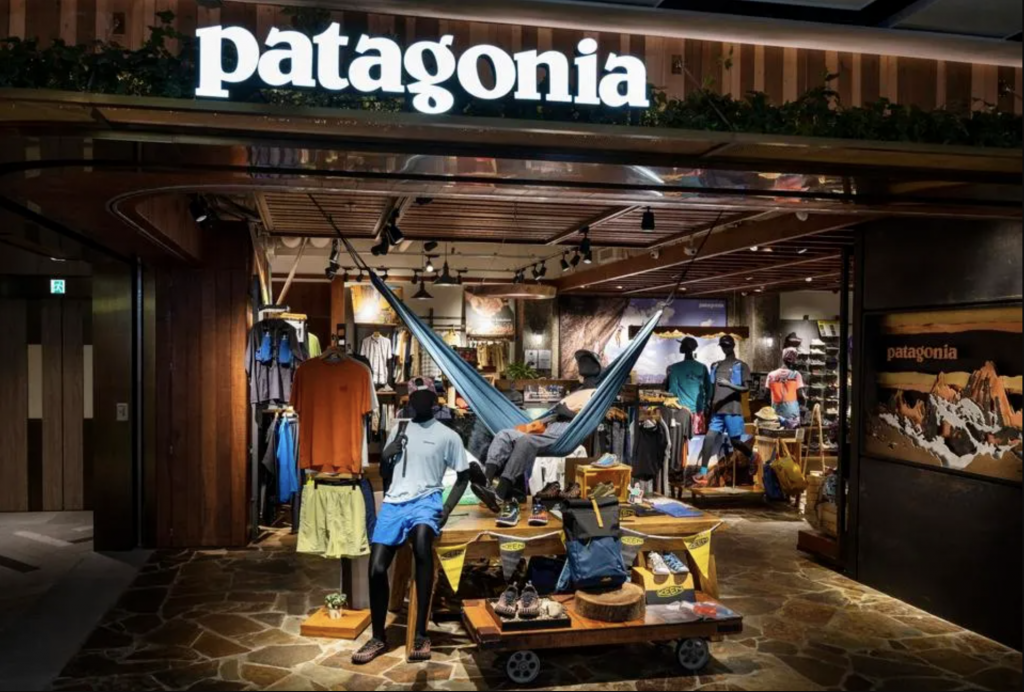
Patagonia has also enhanced the in-store experience with digital elements. Interactive kiosks and digital displays allow customers to explore the entire product range, check inventory, and even place orders directly from the store. This integration of technology helps bridge the gap between physical and digital shopping, making it easier for customers to find exactly what they need.
Moreover, Patagonia’s commitment to sustainability is reflected in their seamless shopping experience. They encourage customers to buy less but buy better, offering detailed product information and promoting durable, long-lasting items. This approach not only aligns with their environmental values but also builds trust with their customer base.
By combining the convenience of digital shopping with the tangible benefits of in-store experiences, Patagonia’s seamless shopping strategy meets the diverse needs of its customers. This approach not only enhances customer satisfaction but also reinforces Patagonia’s reputation as a forward-thinking, customer-centric brand.
Section 2: Tailored Customer Engagement
Patagonia has mastered the art of personalized marketing, leveraging big data to create tailored customer experiences that resonate deeply with their audience. This approach not only enhances customer satisfaction but also drives engagement and loyalty.
By analyzing customer data, such as past purchases, browsing behavior, and preferences, Patagonia crafts personalized recommendations and targeted promotions. When customers visit Patagonia’s website or use their mobile app, they encounter products and offers specifically curated for them. This level of personalization makes the shopping experience more relevant and enjoyable, encouraging customers to return and explore more.
For instance, if a customer frequently purchases hiking gear, Patagonia’s digital platforms might highlight new arrivals in hiking equipment, exclusive offers on related products, or articles about hiking tips and destinations. This personalized content not only makes the shopping process more efficient but also builds a deeper connection with the brand.
Patagonia also uses personalized email marketing to keep customers engaged. Subscribers receive tailored newsletters featuring products and stories that align with their interests. These emails often include special discounts, early access to sales, and updates on new product launches, making customers feel valued and appreciated.
Moreover, Patagonia’s commitment to sustainability is woven into their personalized marketing efforts. They use their platforms to educate customers about the environmental impact of their purchases and offer suggestions for eco-friendly alternatives. This not only promotes sustainable shopping habits but also aligns with the values of their environmentally conscious customer base.

By focusing on personalized marketing, Patagonia creates a shopping experience that feels uniquely tailored to each customer. This strategy not only drives sales but also fosters loyalty and trust, as customers feel understood and valued by the brand. Through tailored customer engagement, Patagonia continues to build strong, lasting relationships with its audience, reinforcing its position as a leader in both retail and sustainability.
Section 3: Building a Community on Social Media
Patagonia has effectively harnessed the power of social media to build a vibrant and engaged community that is deeply committed to sustainability. By leveraging platforms like Facebook, Instagram, Twitter, and YouTube, Patagonia connects with millions of users who share their passion for environmental stewardship.
One of the key elements of Patagonia’s social media strategy is storytelling centered around sustainability. They regularly share compelling stories about their environmental activism, conservation efforts, and the initiatives they support. These narratives resonate deeply with their audience, who are often outdoor enthusiasts and environmentally conscious consumers. By highlighting real-life stories and experiences, Patagonia creates a strong emotional connection with their followers.
A unique aspect of Patagonia’s social media presence is their focus on promoting reuse and repair over new purchases. They actively encourage their community to fix and reuse their existing gear instead of buying new products. Through campaigns like “Worn Wear,” Patagonia shares tips, tutorials, and success stories about repairing and upcycling clothing. This approach not only reduces waste but also reinforces their commitment to sustainability over profit.
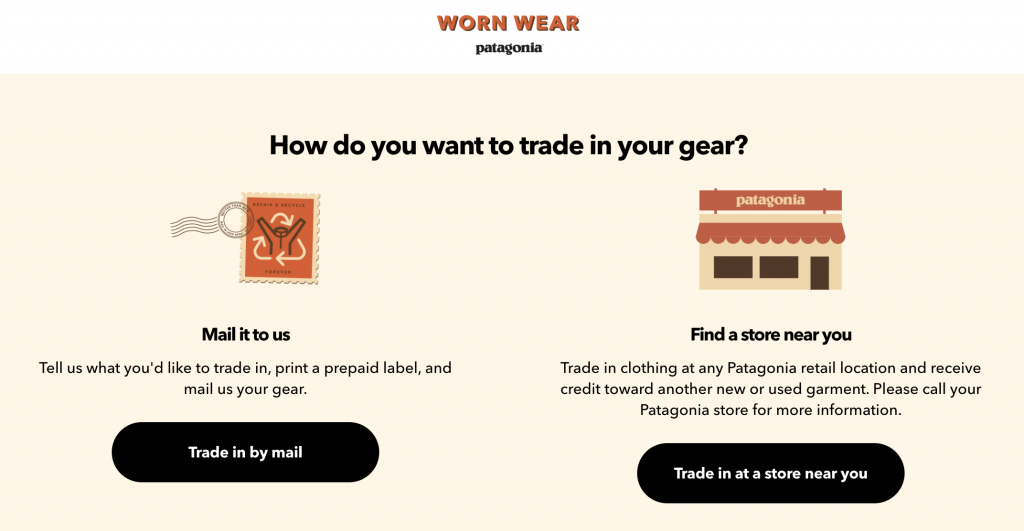
Patagonia also uses social media to advocate for broader environmental causes. They frequently post about ongoing campaigns, policy changes, and initiatives aimed at protecting the planet. This not only raises awareness but also mobilizes their community to take action. By aligning their brand with environmental advocacy, Patagonia inspires their followers to contribute to positive change.
Interactive content plays a crucial role in Patagonia’s social media strategy. They engage their audience with polls, quizzes, and user-generated content campaigns focused on sustainability. For example, they might ask followers to share their favorite outdoor adventure photos or stories about how they repaired their Patagonia gear. This not only increases engagement but also fosters a sense of community among their followers.
Influencer partnerships are strategically used to extend Patagonia’s reach. By collaborating with influential outdoor enthusiasts, athletes, and environmental activists, Patagonia taps into their followers’ networks, gaining credibility and visibility. These partnerships often involve authentic endorsements and collaborations that highlight sustainable practices and values.
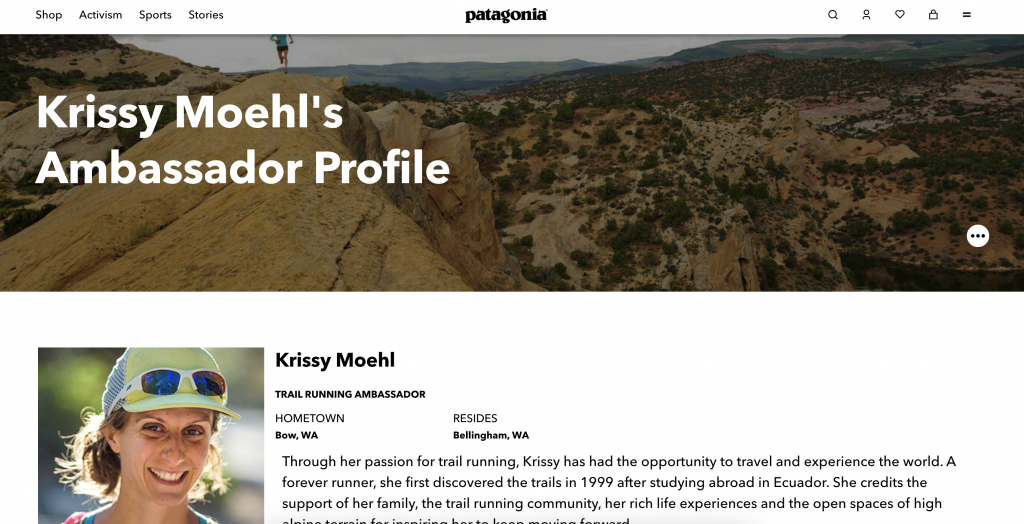
Patagonia’s social media channels also serve as a platform for customer service and feedback. They actively monitor comments and messages, responding promptly to inquiries and concerns. This level of responsiveness shows that they value their customers’ opinions and are dedicated to providing excellent service.
In summary, Patagonia’s social media strategy is centered around building a community focused on sustainability, reuse, and repair. By promoting environmental advocacy, sharing compelling stories, and encouraging interactive content, Patagonia not only increases brand loyalty but also amplifies their impact on environmental issues. This approach has solidified their position as a beloved and respected brand in the digital space.
Section 4: The “Don’t Buy This Jacket” Campaign
One of Patagonia’s most famous and impactful digital marketing campaigns is the “Don’t Buy This Jacket” initiative. Launched in 2011, this bold campaign exemplifies Patagonia’s commitment to sustainability and their unique approach to marketing, which often prioritizes environmental responsibility over mere profit.
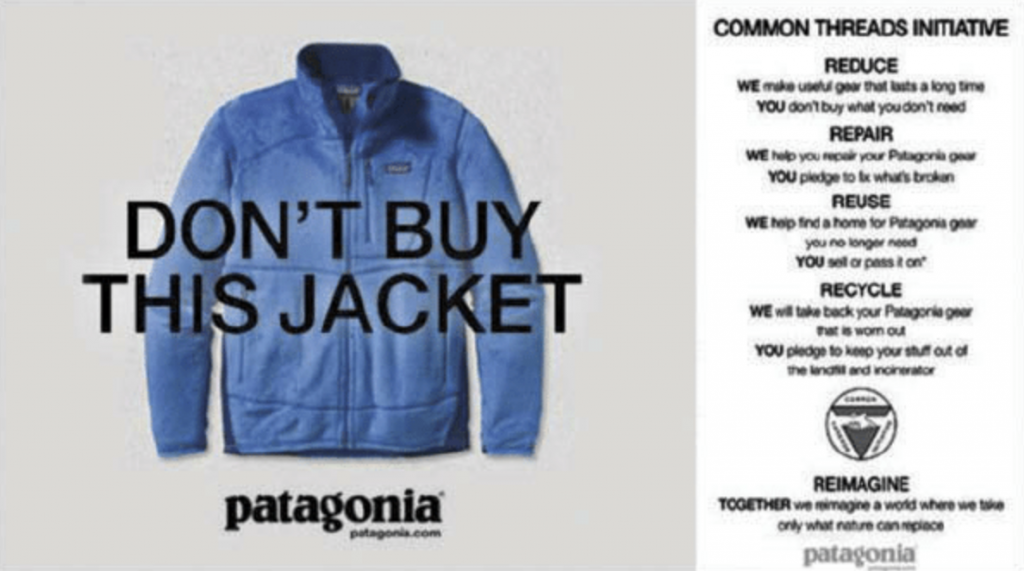
The “Don’t Buy This Jacket” campaign was introduced with a full-page ad in The New York Times on Black Friday, one of the busiest shopping days of the year. The ad featured an image of a Patagonia jacket with the headline “Don’t Buy This Jacket” and a detailed explanation of the environmental cost of manufacturing clothing. The message was clear: Patagonia wanted to encourage consumers to think twice about their consumption habits and to consider the environmental impact of their purchases.
Patagonia used this campaign to highlight their dedication to reducing waste and promoting sustainability. They urged customers to buy only what they truly need and to invest in high-quality, long-lasting products. The campaign also promoted their “Common Threads Initiative,” which focused on reducing consumption by encouraging people to repair, reuse, and recycle their clothing.
Digital platforms played a crucial role in amplifying the “Don’t Buy This Jacket” message. Patagonia leveraged their website, social media channels, and email newsletters to spread the word and engage with their audience. They shared content that explained the rationale behind the campaign, including videos, blog posts, and infographics detailing the environmental impact of the apparel industry and the benefits of mindful consumption.
The response to the campaign was overwhelmingly positive. Customers appreciated Patagonia’s honesty and their commitment to sustainability. The campaign sparked widespread conversation about consumerism and environmental responsibility, resonating deeply with Patagonia’s target audience of environmentally conscious consumers.
Moreover, the “Don’t Buy This Jacket” campaign had a counterintuitive effect on sales. Despite the call to buy less, Patagonia saw an increase in sales, as customers were drawn to a brand that aligned with their values and demonstrated genuine concern for the planet. This paradox highlighted a critical insight: consumers are willing to support companies that prioritize ethics and sustainability.
In summary, the “Don’t Buy This Jacket” campaign is a testament to Patagonia’s innovative and principled approach to digital marketing. By challenging conventional consumer behavior and emphasizing sustainability, Patagonia not only reinforced their brand values but also deepened their connection with their audience. This campaign remains a powerful example of how a brand can successfully integrate purpose and profit, driving both environmental impact and business success.
Section 5: Patagonia’s Strategic Partnerships
Patagonia has strategically partnered with a variety of organizations and companies to amplify their impact and reach. These collaborations have been instrumental in driving innovation, promoting sustainability, and enhancing the overall customer experience.
One of Patagonia’s most notable partnerships is with environmental organizations. By aligning with groups like 1% for the Planet, Patagonia commits 1% of their sales to support environmental causes. This partnership not only reinforces Patagonia’s commitment to sustainability but also inspires other businesses to follow suit. Through these alliances, Patagonia helps fund grassroots environmental initiatives, supporting efforts to combat climate change, protect public lands, and preserve biodiversity.
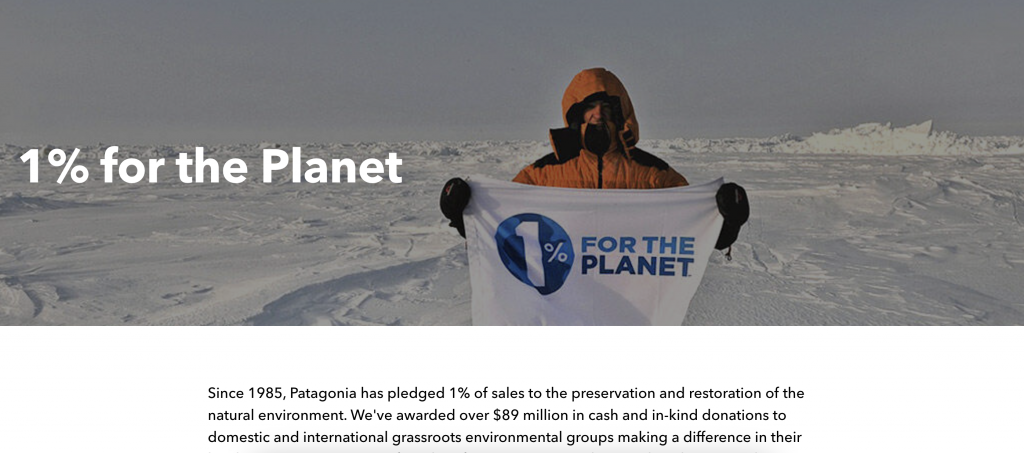
Patagonia has also collaborated with tech companies to improve their digital capabilities. For example, their partnership with Google Cloud has enabled them to utilize advanced data analytics and machine learning tools. These technologies help Patagonia optimize their supply chain, forecast demand, and personalize customer interactions. By leveraging big data, Patagonia can make more informed decisions, reduce waste, and enhance operational efficiency.
Another strategic alliance is with textile innovation firms. Patagonia works with companies that develop sustainable materials and manufacturing processes. These collaborations have led to the creation of new, eco-friendly fabrics and technologies, such as recycled polyester and organic cotton. By integrating these innovations into their product lines, Patagonia continues to reduce their environmental footprint and set new standards for sustainable fashion.
Patagonia also engages in partnerships that promote their repair and reuse initiatives. Collaborations with organizations like iFixit provide customers with the tools and knowledge needed to repair their own gear. Through joint workshops and online tutorials, Patagonia encourages a culture of repair and sustainability, helping to extend the life of their products and reduce landfill waste.
Furthermore, Patagonia’s strategic alliances extend to retail and distribution. By partnering with like-minded retailers, they ensure that their products are sold in environments that align with their brand values. These partnerships help Patagonia reach a broader audience while maintaining their commitment to ethical business practices.
In summary, Patagonia’s strategic alliances are a cornerstone of their success, enabling them to drive innovation, promote sustainability, and enhance customer experiences. By collaborating with environmental organizations, tech companies, textile innovators, and repair advocates, Patagonia not only strengthens their brand but also amplifies their impact on critical environmental and social issues. These partnerships exemplify how working together can lead to greater achievements and a more sustainable future.
Conclusion
Patagonia’s digital marketing success is rooted in its unwavering commitment to sustainability, innovative use of technology, and strategic partnerships. By creating seamless shopping experiences, engaging with customers through personalized marketing, and promoting environmental responsibility, Patagonia has built a loyal and passionate community. Their bold campaigns, like “Don’t Buy This Jacket,” exemplify their unique approach to marketing, prioritizing the planet over profit. Patagonia’s story is a powerful reminder that businesses can achieve remarkable growth while staying true to their core values and making a positive impact on the world.